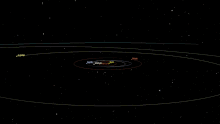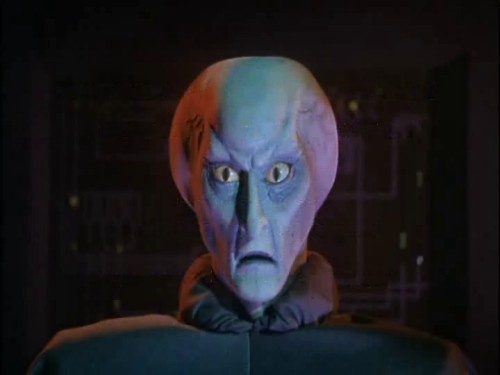Research - Was That A Spaceship That Just Flew By?
Scientists are focusing their scanners and telescopes at the first known interstellar object ever detected in our solar system after noticing that it wasn't shaped like an everyday asteroid.
In fact, the object they've dubbed Oumuamua - Hawaiian for "First Messenger" - appears to be an elongated needle shape, which some have believed would be the perfect shape for a long-haul interstellar spaceship, since it would limit its exposure to gas and dust particles as it zooms around the cosmos. 
Currently, it's halfway to Jupiter and heading out - too far for a rendezvous with an Earth satellite, even if one had been sitting on a launch pad in anticipation of such an event. It's heading out so fast that there is an intense sense of urgency to get as many readings as possible before it beyond range.
"The more I study this object, the more unusual it appears, making me wonder whether it might be an artificially made probe which was sent by an alien civilization," said Avi Loeb, the chair of Harvard's astronomy department. Loeb and most other astronomers concede it is highly unlikely this is an alien spacecraft. "It's sometimes mentioned in a half-joking way that people say things when they’re not quite sure whether they want you to take them seriously or not," said astrophysicist Ed Turner of Princeton University, "If you were betting your house, I wouldn't bet it on this."
Oumuamua was discovered by astronomer Robert Weryk using the Pan-STARRS telescope on 19 October 2017. They know it's from beyond our solar system because of the extremely wide arc it took heading towards our suns gravity and coming out the other side - So wide, it was first thought to be a comet. 
They noticed Oumuamua lacked the dust and gas plume that's often observed as a comet's "tail" here on Earth, so it was reclassified an asteroid.
But then, they noticed that streamlined needle shape that could be anywhere from 80 to 280 meters in length, unlike every other lumpy and potato-shaped asteroid ever observed before. And Oumuamua is spinning like a drill, which is behavior that it unlike all known asteroids. $10 deposit casino
Russian billionaire Yuri Milner will turn his Breakthough Listen project to Oumuamua, using the Green Bank Telescope in West Virginia to scan it for ten hours across several radio frequencies to determine if it is emitting any signals. "With our equipment at Green Bank, we can detect a signal the strength of a mobile phone coming out of this object," Milner says. "We don't want to be sensational in any way, and we are very realistic about the chances this is artificial, but because this is a unique situation we think mankind can afford 10 hours of observing time using the best equipment on the planet to check a low-probability hypothesis." The results will be available within days, although Milner himself knows the odds: "If you look more, everywhere, I think chances are that eventually you will find something," he said.
So let's take a look.
Okay, maybe not at him.








 Create PDF
Create PDF Print
Print Email to friend
Email to friend